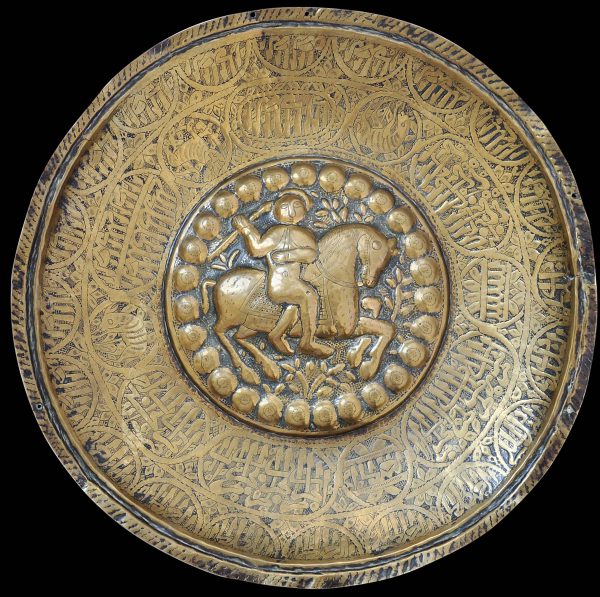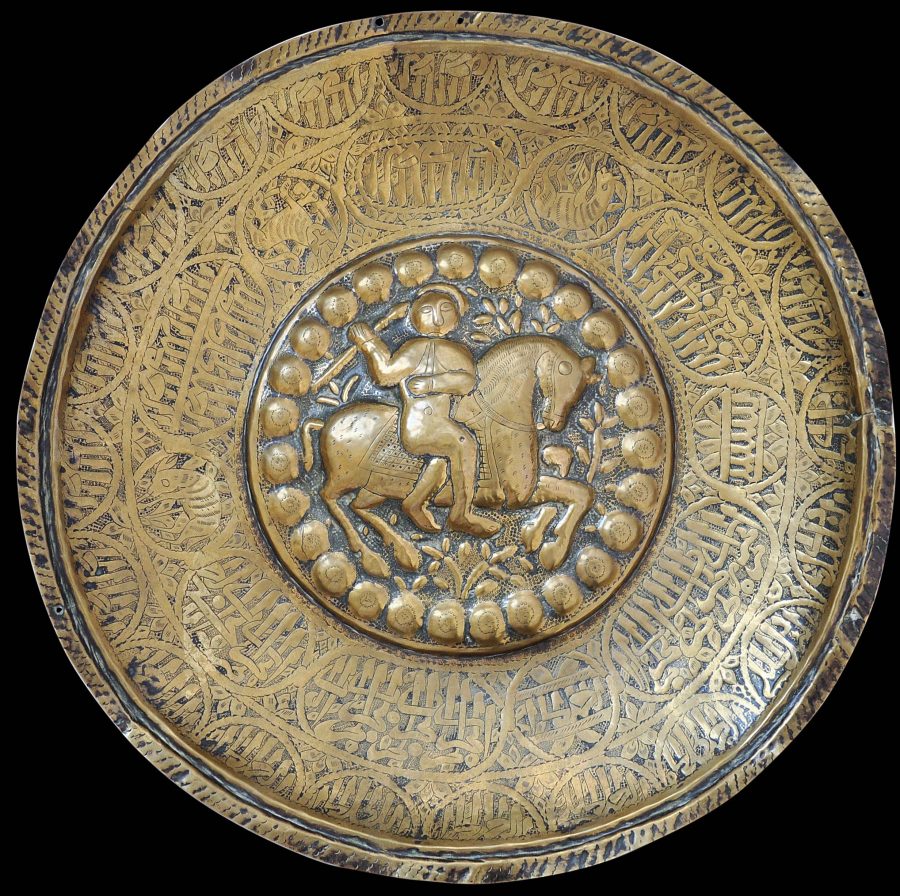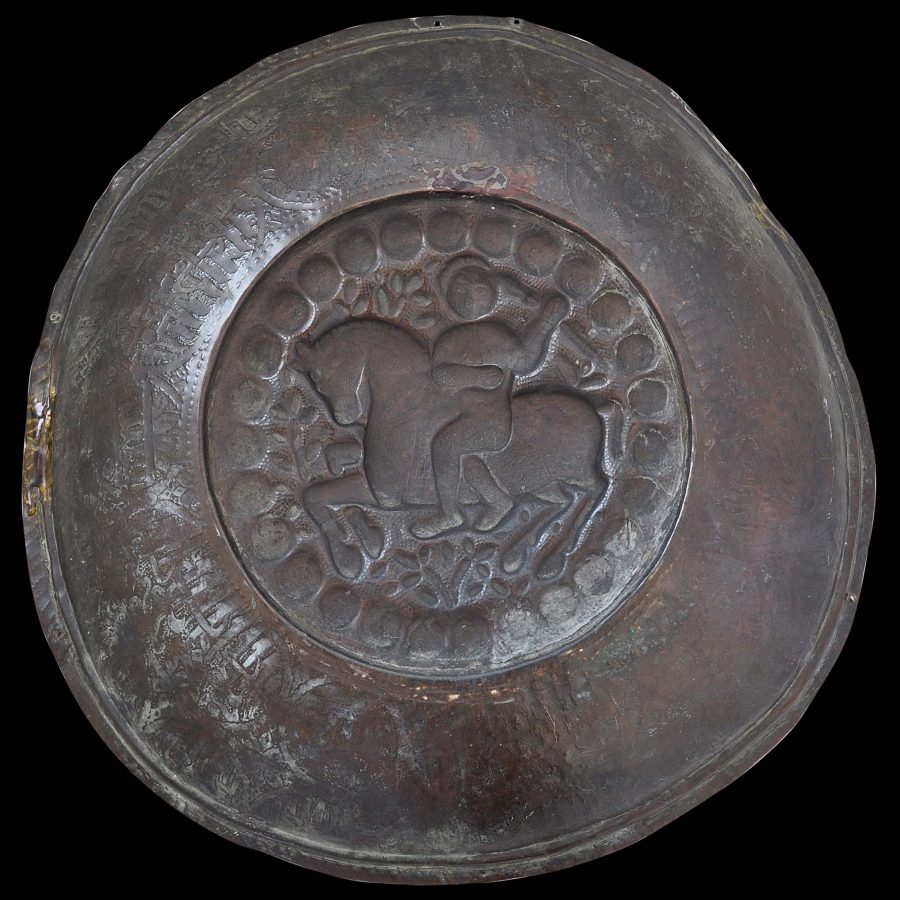This highly unusual Mamluk-style basin or charger is decorated with a central roundel repoussed with a figure astride a horse wielding a sword or javelin over foliage and within a border of 27 semi-spheres with punched designs. The roundel is surrounded by a wide rim engraved with multiple cartouches variously filled with Arabic script and animal figures. The script is highly stylised and only partly legible. It comprises an imitation of an inscription mentioning a sultan’s name. Elsewhere, the words ‘To highest heaven…’ are legible. The rim ends with a thin, flattened band that is punched or engraved with wave-like motifs. The rim has been pierced several times.
The form and dimensions of the charger is that of a brass collection plate of a type made in Nuremberg in Germany in the sixteenth century. Typically such plates were used as a collection plates in churches but not all were used for Liturgical purposes. Often they were decorated with central Biblical or mythical scenes surrounded by bands of script, often in old German. This Islamic charger would appear to be based on a Christian Nuremberg collection plate.
The charger has excellent patina: the front has been polished over the years but the back has not which is dark black in colour which clearly suggests the item’s age.
The central motif possibly is based on St George (without his dragon) or perhaps St Demetrios, the patron saint of Thessaloniki. St Demetrios is depicted on Greek Orthodox plates from the Balkans in which he is portrayed on a horse, spear aloft and with the gladiator Lyaeos speared beneath the horse. St Demetrios appears modeled on St George in any event.
St George is also portrayed in the Koran where he is known as Khidr or al-Khidr (الخضر) and was a contemporary of Moses – Khidr’s actions lead to Moses to violate his oath not to question. George through the personage of Khidr is the only Christian saint to appear in the Koran. He appears in chapter 18. The acceptance of Khidr as St George is strongest in Turkey, Syria and Palestine. St George by tradition was a Roman soldier from the Roman province of Syria Palaestina born of a Palestinian mother and a father from Cappadocia in what is now Turkey.
The legend of St George and the Dragon appears to have been introduced to western Europe by returning Crusaders. The earliest known depiction of the legend is from early eleventh-century Cappadocia, but in the iconography of the Eastern Orthodox Church, George had been depicted as a soldier since at least the seventh century. The depiction on this charger of a soldier figure but without a dragon is consistent with the depiction of George in the East.
Overall, this is an unusual charger. Clearly it is of significant age. The possible associations of the subject matter with St George or Khidr, and the shape and size appearing to be that of a Nuremberg collection plate raise many interesting possibilities. Certainly, the item appears to demonstrate a variety of eastern and western influences.
References
Museu Nacional de Soares dos Reis, Guide to the Collection, 2001.




